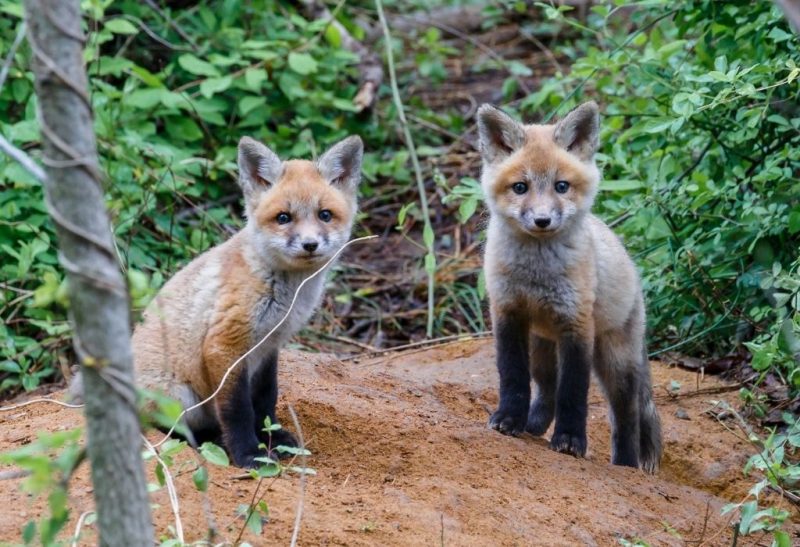Red foxes are among the largest members of the true foxes. They are endemic to the different regions of the world, specifically North America, Asia, Europe, and North Africa. They are solitary and territorial in nature, ensuring their territories are marked with urine, scat, or scent marks. They are mostly nocturnal and would rather stay in their dens during the day. These dens are usually used in giving birth and rearing red fox babies.
Red fox babies are known as kits. Upon birth, their weight is 0.1 to 0.3 pounds, and their colors are gray to tan but may even be darker. They are born blind, but their vision improves after 9 to 14 days. During this stage, they are fond of playing, making noises, moving, and jumping inside their dens. They begin to leave their habitats after 4 to 5 weeks and become weaned entirely after 8 to 10 weeks from birth. Their sexual maturity is attained on their 10th month.
Now that you have learned some basic facts about baby red foxes, let us expand your familiarity with them by knowing more of their characteristics, appearance, and behaviors, including their ancestors’ gestational traits and parenting habits.
Table of Contents
What Are Red Foxes?
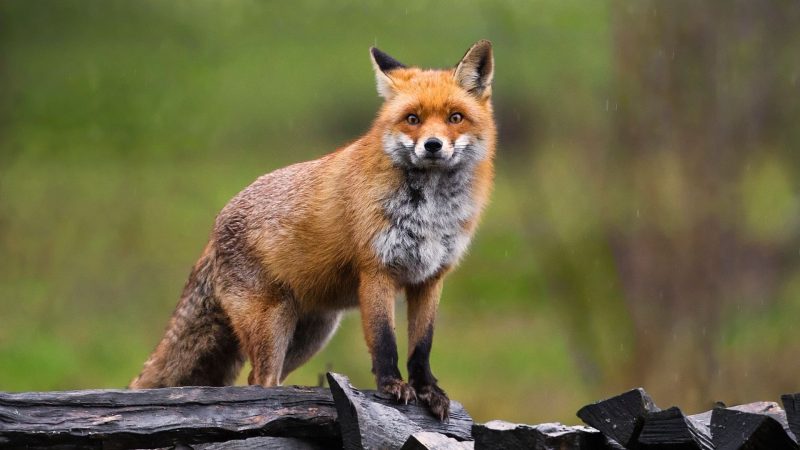
Red foxes have the scientific name of Vulpes vulpes and belong to the genus Vulpes, family Canidae, order Carnivora, class Mammalia, and phylum Chordata. They are mostly found in the northern part of the world, mainly in Europe, North America, Asia, and North Africa. These animals are considered to be the most widely-distributed canid. They reside in a diverse range of environments, including deserts, forests, mountains, tundras, farmlands, prairies, and some urban areas. However, they can live in any other setting as long as sufficient food sources are readily available within their midst. Other than that, they are nocturnal or crepuscular as they are typically active from dusk to dawn and tend to be territorial and solitary. They can live for 3 to 4 years in the wild and 10 to 12 years in captivity.
What Do They Look Like?
- Coloration: Red foxes have light, yellowish-red to dark, reddish-brown upperparts with white underbellies and ashy brown undersides. They have black lower legs, dark brown to black noses, yellow eyes, and black-tipped ears.
- Body Structures: These fox species have long, slender bodies with short limbs and long, fluffy tails that are almost half of their length. Their skulls and ears are narrow, and their braincases are somewhat small. They have oval pupils, wide nasal parts, elongated muzzles, and concave facial profiles. These species also have long canine teeth and sharp premolars, which they use to smash and swallow their food. Lastly, the paws in their front have 5 digits, while those in the back have four digits only.
- Length and Weight: Red foxes are among the largest canid species. On average, they measure 14 to 20 inches in height and 18 to 35 inches in body length. Their tails are 11.8 to 21.9 inches long, while their ears are 3 to 5 inches long. These animals have an average weight of 5 to 31 pounds, with males weighing heavier than females.
What Are Red Foxes Babies Called?
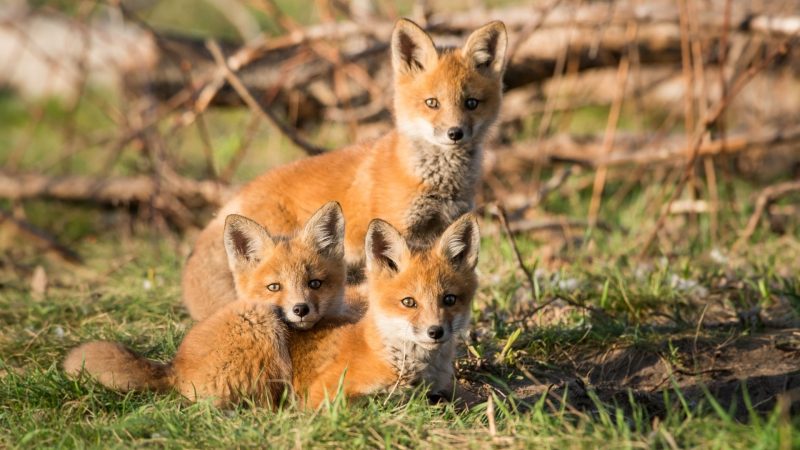
Red fox babies are referred to as kits. However, they can also be called pups and cubs. They are generally known as such until they’re 4 months old and are typically considered as adults once they reach at least 1 year.
Red Fox Babies Coloration
When red fox babies are born, the colors of their fur are temporarily gray, tan, or darker. They start to have a gray woolish color upon their birth, which transforms into their primary colors once they mature. Red fox babies initially have pink noses, which also darken and turn black as they grow. As they age, the adult colors of bright red to yellowish-red start to show, specifically in about 3 weeks’ time.
How Many Babies Do Red Foxes Have?
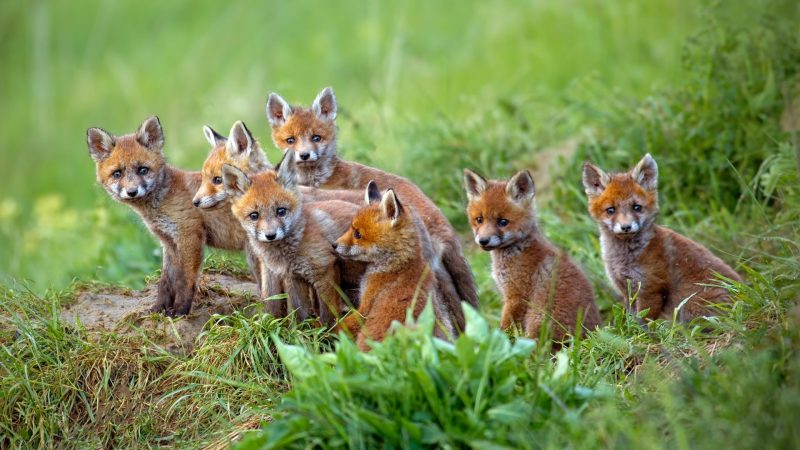
After 51 to 53 days of gestation, baby red foxes are born in a litter. Each litter may consist of 4 to 8 kits, with 5 cubs on average. They are usually born in dens, where they are also reared and taken care of. These dens are mostly underground to ensure the safety and protection of their offspring.
On average, only half of the litter will survive after at least 1 to 2 years. This may be due to several reasons such as accidents, predation, diseases, parasites, and starvation.
What Time of the Year Do Red Foxes Mate?
Red foxes typically mate in January until early March. They perform mating in a way similar to dogs. Red foxes usually stick and get locked together with their mates in a tail-to-tail position known as the copulatory lock or tie. The duration may last for an hour, but it may be longer and more intense in some instances.
When they are in the act of mating, they produce loud and unpleasant noises, which may be in the form of strange barks, yelps, screeches, and high-pitched sounds. These vocalizations are referred to as stress noises rather than happy sounds due to their eerie and intense character. This means that mating is somewhat stressful rather than an enjoyable experience for them. It is also believed that this is done to warn and advise other animals that they are engaged in a mating activity and should not be disturbed.
Once they feel satisfied and fulfilled about their mating experience, they will unlock and move separately from each other.
Do Foxes Have One Mate for Life?
In the wild and captivity, foxes usually mate with only one partner, and both of them help raise and care for their young. However, a male fox may mate with other vixens, and female foxes may procreate with other male foxes in some situations. Thus, they may mate with other foxes outside of their group. But as to raising their kits and cubs, they are somewhat monogamous and will only stay with one partner. The said couple typically lives in a single den.
Red Fox Gestation
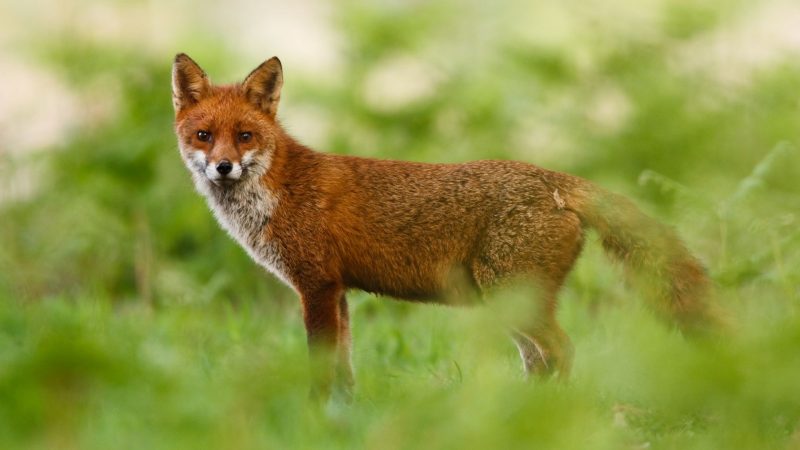
Female red foxes undergo an estrous period for at least 1 to 6 days. When they get pregnant after a successful mating, the fertilized egg will be implanted in their womb within 10 to 14 days, and the gestation process officially begins. This will last for an average of 51 to 53 days, but in some instances, it may be as short as 49 days and as extensive as 56 days. During the scope of the pregnancy, the female red fox stays in its den and takes care of its gestation. The male fox is responsible for hunting food and will provide his mate with the necessary provision. However, the female species may forage for food at the start of the pregnancy to contribute to their growing nutritional requirements.
Also, the male red fox may mark their territories during the period of pregnancy with the use of their feces and urine. This will serve as a caution for other foxes and animals that they should stay away and avoid the said areas for purposes of safety and protection.
Foxes as Parents | Do Fox Families Stay Together?
Before a kit is born, its parents will look for new dens where they can raise and rear the fox babies. These habitats may be found under woodlands, hedgerows, under open slopes, and wood edges. The said offspring are generally blind upon birth, but their sense of sight becomes clearer after 9 to 14 days. During this period, the mother stays with them to keep them warm, while the male parent guards and secures the perimeter of their dens. They need adequate security measures as they generally don’t have a clear vision, and they are prone to be kidnapped by bigger predators and animal intruders.
When feeding the young, the mother pours over the food to the kits, who will then consume the food and water given to them. Thus, their nutritional status will depend upon the provisions handed to them by their parents. If the female foxes have not received any food from their male counterparts, they will make distinct noises and howls in the openings of their dens to inform the latter that they need food. As to urination and bowel movement, the mothers will stimulate their excretory drives by prodding or pushing them around.
How Long Do Baby Foxes Stay With Their Mother?
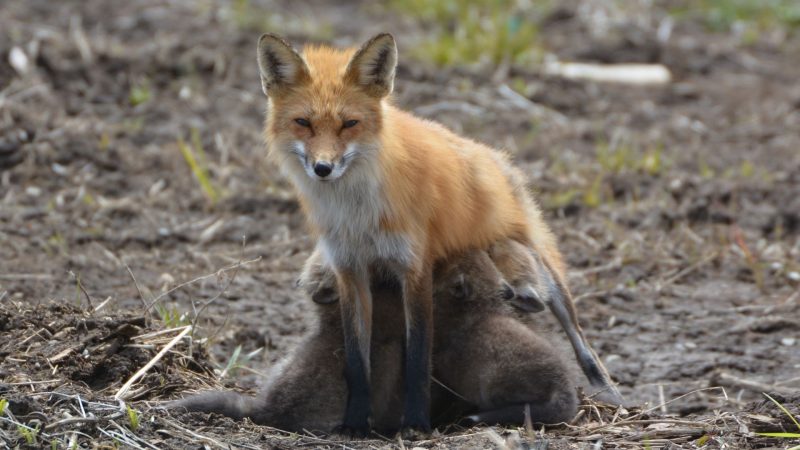
Starting six months from birth, baby foxes tend to stay away from their mother. During this period, they are somewhat considered self-sufficient as they have already experienced and witnessed the environments outside of their dens. Also, they have learned how to feed themselves without relying too much on the provisions from their parents. They already have a glimpse of the situation in the outside world from their constant playing, jumping, and moving away from their habitats which somewhat make them mature enough to face it. At this stage, they will begin to look for partners to mate with and then start a family.
Will a Mother Fox Leave Her Babies?
A mother fox will not necessarily leave her babies as she is a good parent. They will not usually abandon their kits as they would do all their might to protect and keep the predators away from them. However, when bad weather arises or when their parents constantly transfer from one den to another, there is a possibility that they will leave their kits behind. The fox cubs will then have difficulty surviving as they would be an easy target of predators and natural fox enemies.
How Long Do Baby Red Foxes Stay In Their Den?
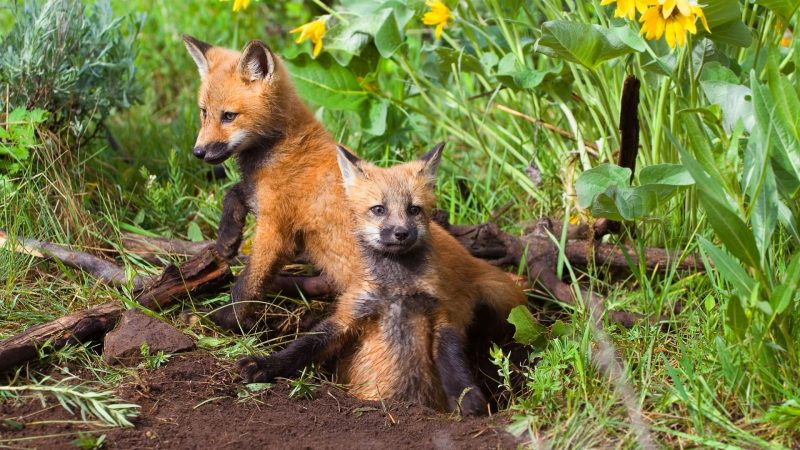
Baby red foxes typically stay in their dens until 4 to 5 weeks following their birth. After that period, they will start to go outside their habitat and explore the outdoors. They will begin playing, moving, jumping, and goofing around with other red foxes and learn to forage for food, usually carcasses of dead animals. However, despite their newly-found independence, they are still under the supervision of their parents. The female and male red foxes will still keep their eyes on their offspring to protect them from bigger animals and predators.
What Month Do Fox Cubs Leave the Den?
In the months of August and September, fox cubs begin to leave their dens. They typically do this to look for new territories and search for partners to start a family.
As the fox kits start to depart from their dens, their mothers will be heard screaming and screeching loudly as they realize that they have lost control over their offspring.
Can a Fox Cub Survive on Its Own?
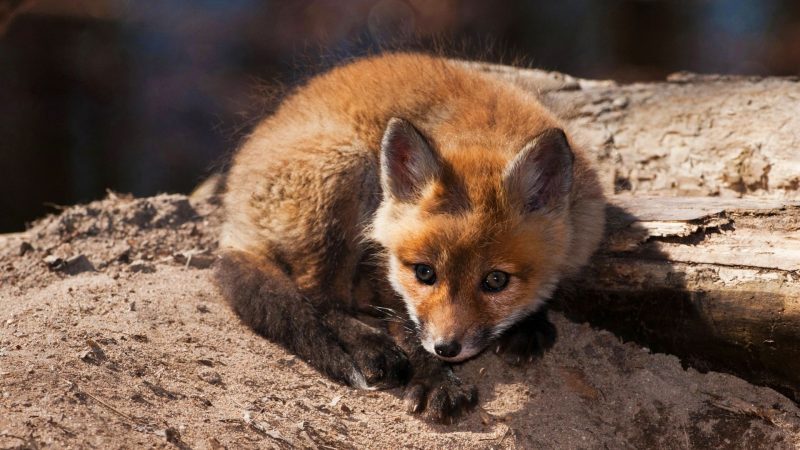
It depends on their age. When a fox cub surpasses the 6th-month mark, it won’t be easy to distinguish them from the adult red foxes. During this stage, most of them will be self-reliant and somewhat acquire the necessary skills to survive life outside of their dens. They will probably have the proper mindset and power to fight and win over other animal intruders. If this is the case, they can undoubtedly survive independently.
Summary
Red fox babies are generally called kits, cubs, or pups. They are born after an average gestational period of 51 to 53 days in a litter. The red fox babies will initially have tan, gray or dark fur, which morphs into an adult red fox color as their age progresses. They are also blind upon birth, but their eyesight will improve after 9 to 14 days. The red fox babies will be reared and taken care of by their parents in a den, and once they reach 6 months old, they will start to live independently.
Related: Types of Foxes | Explained (with Pictures)
List of Sources
The Virtual Nature Trail at Penn State New Kensington – Species Pages. (2015). Pennsylvania State University.
Crosby, C., Kerwin, K. (2020). Red Fox Ecology and Behavior. Rutgers, The State University of New Jersey.
Red Fox. (2018). Connecticut’s Official State Website.
Foxes. Renfrewshire Council.
